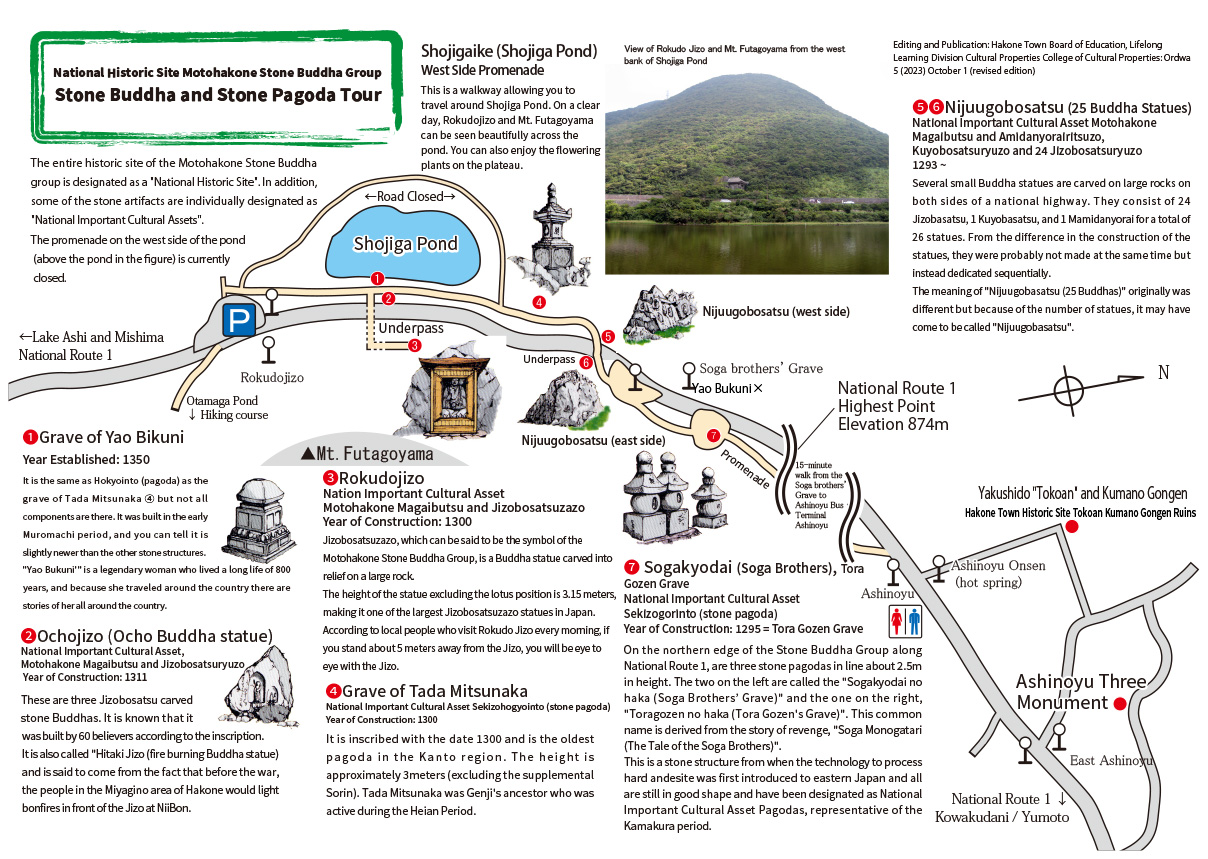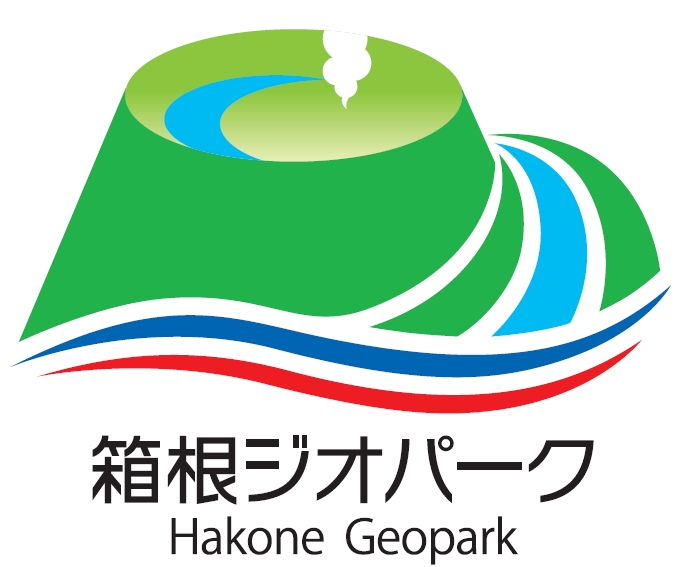The Moto Hakone Stone Buddha Group, a National Historic Site, is located around Mt. Kamifutagoyama, which part of the later central volcanic cone, and Shojiga Pond, which is the saddle of Mt. Komagatake and geologically, the area borders the lava of Mt. Kamifutagoyama and Mt. Komagatake, and stones used as materials are thought to be made from these lava rocks. In addition, saddle is also thought to be an extension of the Hakone-Miyagino fault, which extends from Moto-Hakone. A major feature of these stone Buddhas and stone pagodas is that they were built in a concentrated period during the late Kamakura period. Almost all have images of Jizobosatsu carved into them, indicating a deep connection with the Jizo belief. Why this area became such a sacred place for the Jizo belief was because it was near the highest point of “Yusakamichi”, which was used as a road to cross Hakone and when the poet Asuaki Masaari passed through this area, he wrote, “Hell is in this area” and it is thought that this area was feared because and considered to be “hell” from its rugged terrain and desolate landscape. Therefore, as the Jizo belief spread throughout the country that “Jizobosatsu saves the lives of those who fall into hell”, it can be thought that the land once feared as “hell”, also became a sacred place for the Jizo belief to comfort travelers. It is presumed that Ninsho, the chief priest of the Kamakura Gokurakuji Temple, was involved in the construction of these stone Buddhas and stone pagodas. While Ninsho was active as a monk, he also carried out numerous civil engineering and construction projects as part of his charity work.

